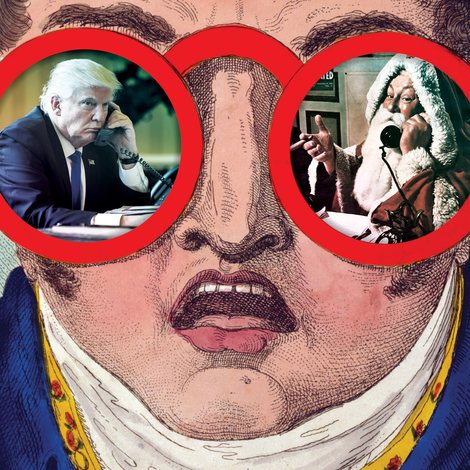I read the whole thing, all 567 pages of Thomas Mallon’s The Very Heart of It: New York Diaries, 1983–1994, which surprised me, because once I got past the parts that I was in some way witness to, as a student of Mallon’s at Vassar College in the 1980s, I had expected to skim. I tried to skim. But the skimming never lasted long. And so, despite my best efforts at slothful reading, my attention kept getting snagged, on lines like:
“There are no bones in David Leavitt’s hand. It’s like shaking a chicken patty.”
“I saw Imelda Marcos, best foot forward, getting into a limo with Jersey plates.”
“[Gore Vidal] is always, entirely, on. He looks away from you when he delivers most of his lines (which is what his conversation consists of), as if afraid he might establish too much of a human connection and crack his own persona.”
“Joan Rivers has a face that’s been redesigned for television but not life: It is beyond surgery, beyond reconstruction. One can only call it a head transplant.”
Mallon is, among other things, a master of the bitchy aperçu and the briskly summarizing detail. He is a gossip of the highest order.
(Full disclosure: I appear twice, very much in passing. In one instance, I come to his office to complain about an adviser; Mallon notes that “her real trouble is that she refuses to find him adorable.” In another, I come to his Manhattan apartment during summer break: “Tom Beller came by on his bicycle for beer—Ferris Bueller’s day off.... He means well but he is a Vassar Student x 2.... He talks a mile a minute and he’s very smart, but not as smart as he thinks he is.”)
The book begins in the fall of 1983, not a particularly happy time for Mallon. He is a 32-year-old English professor awaiting news of his tenure case, while at the same longing to escape higher education (for October break, “the students go off to California & London; the faculty may get as far as Vermont”) with its narrowing, politically correct worldview.
As a practicing Catholic and anti-Communist, he is averse to the party of Carter and Dukakis and Mondale but not yet able to stomach a vote for Reagan. (“There are limits to what one can do for one’s anti-communism and country.”) He is also recovering from the breakup with a classics post-doc named Tom Curley that has left him both crushed and anxious. The breakup and his longing for Tom, who gets sick with AIDS, is nearly as overwhelming as the sense of mystery and anxiety about this new plague, which kills so many of the author’s friends.
“Keeping a diary is not a practice that universally endears one to one’s friends,” Mallon observes in the introduction to his first non-academic work, A Book of One’s Own: People and Their Diaries, published in 1984. I read The Very Heart of It in a state of growing amusement and amazement at Mallon’s acid pen. Not for nothing was he a protégé of Mary McCarthy’s.
Publishing one’s diaries is an act usually reserved for the famous, the dead, or the British. Mallon is none of the above. He grew up in small-town Long Island before going on to Brown, Harvard, Cambridge, and New York publishing. One of the touching details of the book involves a reference to his father “growing old and sick with worry as he shelled out all 84 payments at the Dime Savings Bank” in order to pay for Brown.
The book consists of brief entries and quickly jotted impressions, and amounts to a kind of sketchbook of the Vassar English Department, literary life in New York City during the AIDS crisis, and Condé Nast in its last golden age. Mallon is a keen observer of not just himself but of his contemporaries, stray encounters on the street or in late-night bars, and the political scene. (“Nov 19: Dallas is 20 years ago Tuesday, and we are going through a national orgy of commemoration.... It’s as if we’ve decided to be governed by an apparition for a month or so.”)
In his hands, keeping a diary isn’t so much an act of introspection or reflection as it is an act of discipline. It’s a kind of apple-a-day-keeps-the-doctor-away approach, which is to say one anecdote, one image or snippet of dialogue, one colorful zinger per entry. There is a thrill in getting a contemporaneous account of those years, but what makes the book sing is the voice: smart, attuned to the specific, delightfully and relentlessly snide. That last quality, consumed in such abundance, left this reader feeling slightly queasy, but I was nonetheless ready to accompany Mallon wherever he went.
Thomas Beller is the author of several books, including J.D. Salinger: The Escape Artist and Lost in the Game: A Book About Basketball. His next book, Degas at the Gas Station: Essays, will be published by Duke University Press in November


